ASHRAE 12-2020 Guideline

The new guideline 12 version takes a much closer look at how to manage the risk of Legionellosis. Over the years, the challenge has changed from minimizing Legionellosis to managing Legionellosis and reducing to stopping cases. It is important to note that the new standard implies that getting a test showing positivity isn’t necessarily negative. This should help the “head in the sand” syndrome that many in the industry still abide by. The “if I don’t know I have a problem, then I don’t have a problem.” We all know that we should be proactive in stopping cases of Legionellosis, and the only way we know if we are doing a good job and need to adjust our current strategy is to test. The new Guideline 12 “gives us permission” and says, “this is okay.” The new version is written to be more easily adopted into code. However, this doesn’t mean it will be. It takes several years for new regulations to be adopted by various governing bodies. The guideline details disinfection methods and the numerous risk factors within the plumbing system that affect your plan’s efficacy to minimize Legionellosis. It considers that water quality, sediment, and biofilm can decrease the effectiveness of certain disinfectants. The guideline notes and calls attention to the fact that biofilm and sediment can wreak havoc on a plumbing system and reduce the efficacy of disinfectants and higher water temperatures. The new version deemphasizes thermal shock and calls out its negative aspects. Temperature efficacy can be highly volatile due to changes in water quality. It should be noted that the standard industry temperature chart is based on laboratory testing, not real-world testing that takes into consideration fluctuating water quality, biofilm, and sediment. Guideline 12 identifies water quality risk factors, including sediment, disinfectant residual, temperature, and water age. It speaks on the adverse effects uninsulated or under-insulated pipes, dead legs, long pipe runs, cold pipes near hot sources, biofilm, debris, sediment, and water age can have on disinfectant efficacy. The only disinfectant not affected by these risk factors is copper-silver ionization. The guideline notes the possibility of municipalities adding a disinfectant to the water supply and that disinfectant residuals decrease as water travels to and through a building. Municipality disinfectant treatments are usually not high enough to adequately reduce Legionella within a building’s plumbing system. The municipality disinfectant is also volatile. The municipality can change the level, and they often do not let you know if it has been changed. The disinfectant level can also be affected by weather conditions and water main breaks. In section five, the guideline recognizes electronic, or sensor faucets have become very popular because of water conservation efforts. However, they can reduce flow and therefore deliver stagnant water. The guideline points out the need for cross-connection and backflow prevention, especially with outlets that might not be as notable, such as mop sinks. Another item to remember is other equipment that can provide nutrients for bacteria—particularly carbon filters. There was no mention of thermal and chemical shock in the 2018 version, which is likely to have been included in the latest version due to COVID-19 and buildings closed with dormant piping systems. While thermal and chemical shock can have immediate effects in times of emergency, they are only helpful at one point. Their effects decrease very quickly, and recolonization can happen very quickly. Both thermal and chemical shocks also potentially cause significant corrosion and other damage to plumbing systems and equipment. Takeaways Install a filter to reduce sediment. LiquiTech’s Safe T Gard filters do not deplete disinfectant residuals as other filters can do. Utilize copper-silver ionization for potable water remedial treatment because of its long-term effectiveness. Utilize copper-silver ionization as a permanent disinfectant because it is not affected by the risk factors ASHRAE 12-2020 identifies, it does not cause corrosion; there is no scalding risk and no threat to humans. The new guideline noted a more comprehensive temperature range for optimal Legionella growth. Copper silver’s efficacy is not affected by temperature. The guideline emphasized that a positive Legionella test isn’t necessarily bad, and testing should be done regularly as a preventative and proactive approach to reducing the risk of Legionella. Create a flushing protocol if you don’t already have one.
Legionnaires’ Disease Cases Soar Again, Set New Record
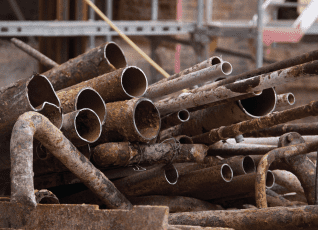
America’s deadliest waterborne disease is becoming more pronounced. The number of reported cases of legionellosis, an umbrella term for two illnesses caused by Legionella bacteria, climbed by 33 percent last year, to 9,933 cases, according to data released this week by the Centers for Disease Control and Prevention. The number of reported cases in 2017 was 7,458. The milder of the two ailments caused by the bacteria is Pontiac fever, which is akin to the flu. The vast majority of the cases, however, are Legionnaires’ disease, a severe respiratory illness that resembles pneumonia and kills about one in 11 people it infects. The illnesses, which are not contagious, are spread by inhaling mist contaminated with the bacteria. Rooftop cooling towers, hot tubs, showers, and ornamental fountains are among the sources of water vapor linked to disease transmission. Just over half of the cases occurred in only eight states in the mid-Atlantic and Great Lakes, regions that have the highest rates of infection in the country. Those states are Illinois, Indiana, Michigan, New Jersey, New York, Ohio, Pennsylvania, and Wisconsin. Ohio reported twice the number of cases as California (930 to 453), even though Ohio’s population is roughly a quarter that of California. Nationwide, there were three reported cases per 100,000 people, which is more than six times higher than the reported rate in the early 2000s. The CDC releases official annual disease counts roughly 10 months after the end of the year. As for the number of infections, legionellosis now ranks above tuberculosis and just behind hepatitis A. Hepatitis A cases are also soaring, due in part to drug use, more people experiencing homelessness, and associated unsanitary conditions. Health researchers say there is no single explanation for the steady rise of a disease that was first identified four decades ago and spreads at the intersection of the built and natural environments. A risk factor is age, and the American population is getting older, with the median age having increased by nearly 10 years since 1970. People older than 50, smokers, and those with weakened immune systems have a higher risk for the disease. The nation’s water delivery systems are also aging, and the bacteria can take root in the biofilms that lodge in corroded sections of pipe. Water main breaks, a consequence of older infrastructure, may introduce unwanted bacteria into pipes. A changing climate is another factor. Studies have shown that infections spike following warm, wet periods. Late summer, in general, is the peak season for Legionnaires’ disease. In some cases, building management and design may be to blame. Water and energy efficiency measures, desirable in their own right for resource conservation, can be detrimental when it comes to Legionella control. Energy conservation measures may put water temperatures within buildings in the range that is most suitable for bacteria growth. Water conservation means more stagnant water in oversized pipes. Better diagnostics and more watchful doctors are other factors. Legionnaires’ disease is widely assumed to be underreported, undiagnosed, or mistaken for pneumonia. An expert committee convened by the National Academies of Sciences, Engineering, and Medicine estimated that the true number of Legionnaires’ disease cases in the United States each year is between 52,000 and 70,000. The higher estimate accounts for cases that are misdiagnosed as pneumonia or not reported. Though 2019 data is still incomplete, it has already been a record-breaking year. Georgia registered the largest Legionnaires’ disease outbreak in its history this summer, as did North Carolina, where 142 people were sickened at the Mountain State Fair. Four people died in that outbreak, which was linked to a hot tub display at an exhibition hall.
As Legionnaires’ Disease Cases Surge, Lawsuits Pile Up
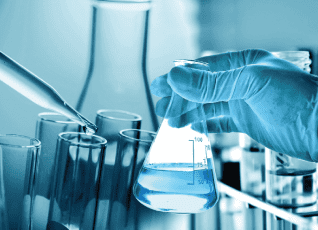
By Brett Walton, Circle of Blue Elliot Olsen has been litigating Legionnaires’ disease cases for a dozen years and he’s never been as busy as today. “I’ve got more lawsuits going now than I ever have,” said Olsen, a lawyer with Siegel Brill, a firm based in Minneapolis. Olsen, who represents people nationwide sickened with the pneumonia-like illness, said that Legionnaires’ cases account for about one-third of his current work load. There is plenty of work to go around. The number of people who fall ill with Legionnaires’ disease in the United States is soaring, up 33 percent in 2018 compared to the previous year, according to data released this week by the Centers for Disease Control and Prevention. The disease, which is not contagious, is caused by inhaling water droplets that are contaminated with Legionella bacteria. It frequently sends people to the hospital, and it kills about one in 11 people infected. In tandem with the rising disease burden is a corresponding increase in the number of lawsuits, according to lawyers involved in these cases. Most legal actions are civil lawsuits against building owners or their maintenance contractors for negligence or failure to protect guests on their property, a personal injury claim akin to a slip-and-fall case, lawyers say. But criminal charges against Michigan health officials in the wake of 12 deaths in Flint linked to Legionnaires’ disease awakened the public health community to the legal risks of inaction against a disease that was first identified four decades ago but has grown in prominence only in the last few years. The involuntary manslaughter charges were dropped this summer by the Michigan Attorney General’s Office, but the shock has not worn off. In light of the flurry of litigation, observers wonder whether legal liability will prompt changes in building management and oversight practices that are not yet mandated by law. Few jurisdictions in the country have any rules for preventing the spread of the bacteria that proliferate in building water systems. New York, for instance, regulates cooling towers, a common source of bacteria transmission, and the federal government has ordered hospitals and nursing homes that receive Medicare payments to inspect and test their water systems. Beyond that, regulations are scarce for America’s deadliest waterborne disease. “Generally speaking, this is one area where the potential for liability can drive self-regulation,” Lance Gable, an associate professor at Wayne State University Law School who studies public health law, told Circle of Blue. “Litigation sometimes gets out ahead of regulations imposed by government. The threat of litigation can drive behavior, and drive behavior in the absence of regulation.” Civil Cases Dominate the Courts Examples abound of legal actions that stem from alleged mismanagement of building water systems. Last month, a man who contracted Legionnaires’ disease at the Mountain State Fair, in western North Carolina, sued the vendors whose hot tubs are suspected as the transmission source. The hot tubs were on display at an exhibition hall at the Western North Carolina Agricultural Center. In September, the family of a woman who died from Legionnaires’ disease after staying at the Watkins Glen Harbor Hotel, in the Finger Lakes region of New York, sued the company that owns the hotel for alleged negligence in building maintenance. And in August, a woman sued the Rush Oak Park Hospital, located in the Chicago suburbs, alleging the hospital was negligent and failed to warn patients about the bacteria. For Olsen, these alleged failures are a familiar refrain. He sees the same mistakes repeatedly in his cases: building managers are ignoring their water systems. “What I see most, in terms of a water management plan, is nothing — they have no water management plan in place,” said Olsen, who has been working on Legionnaires’ disease lawsuits for about 12 years. “So they have no strategy whatsoever to protect their building from being colonized by Legionella. That’s the most common thing I’ve seen.” Olsen tries to prove that whoever is in charge of the building’s water supply, either the owner or a contractor, did not adequately maintain the system to prevent Legionella growth. The bacteria are present in lakes and rivers, but they multiply to the point where they become a health risk in warm, stagnant water — water that can be found inside building plumbing. Health department officials investigate outbreaks, which are two or more cases linked to the same source. Those inquiries can be a boon to people filing a lawsuit if the health department investigation turns up solid evidence that connects the bacteria at the source to the bacteria that sickened individuals. If there is no direct link to a bacteria source, having a water management plan in place that adheres to one of the industry standards is a good defense for a building owner in the event that someone gets sick, according to Russell Nassof, founder of the health risk consulting firm RiskNomics. Environmental investigations for Legionnaires’ disease are complex and a “smoking gun” link between source of transmission and patient is hard to trace, Nassof said. Evidence that a building is checking its chlorine levels and water temperatures and periodically flushing its pipes is firm ground to stand on. “If you have potential exposure points out there, different exposure points, and you have one, for example, with good documentation and a water management plan that has been maintaining their building pristinely, then in all likelihood you would start to look at other sources for potential liability,” Nassof told Circle of Blue. Tom Bernier, a partner at Goldberg Segalla, is a defense lawyer in Legionnaires’ cases. Typical clients include building owners and maintenance contractors, but he has recently seen liability lawsuits extend to general contractors, architects, plumbing engineering people, and contractors that put in potable water systems. When constructing a defense for his clients, Bernier seeks to call doubt on the direct link between building and plaintiff. Are there other potential sources of exposure? Is the bacteria of the same genetic type in both the building and the sick person? Could the person’s ailments be
How Biofilm Affects Waterborne Pathogens
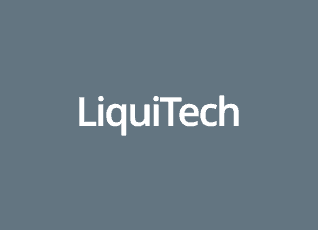
Biofilm is a collection of different types of bacteria, fungi, and protists in a colony enveloped in secreted slime that allows them to adhere to moist surfaces ideal for growth. Biofilm is one of the most common techniques for the growth and protection of these microorganisms and is not only a nuisance but a potential hazard. Bacterial resistance Bacteria in the biofilm can be up to a thousand times more resistant to typical disinfectants and antibiotics than the same microorganisms grown in suspension. Rapid recolonization Even if all free-floating bacteria are eliminated at a given time, biofilms allow for quick growth and recontamination of a surface or area if the associated biofilm is not treated. Rapid amplification Biofilm acts as an ideal breeding ground for the rapid amplification of bacteria and dangerous pathogens by providing ideal environments and nutrient deposits. Why testing matters Testing for biofilm in pipes and other water sources is one of the most important safety strategies that property owners can use. By performing regular evaluations, biofilm-forming bacteria colonies can be eradicated before they have an opportunity to turn into an outbreak of disease and infection. Because you can find potentially dangerous pathogens such as Legionella in biofilm, it is important to check for its presence regularly. Vigilance can help property owners and managers prevent biofilm formation and protect the health and safety of employees and the general public. Being prepared with a water management plan is crucial, especially if a test does discover biofilm in water lines. Information from:cdc.govhttps://www.corrosionpedia.com/definition/1649/biofilmhttp://www.rroij.com/
Giardia Explained and How to Prevent It

What is Giardia? Giardia lamblia is a common waterborne parasite that causes the diarrheal illness giardiasis. Humans most often come into contact with Giardia in water by swimming in contaminated pools. However, it can also be transmitted through other sources that have been exposed to stool from an infected person or animal. The water parasite Giardia infects living things by being swallowed or transmitted through blood. Trace amounts of this pathogen can even be found in tap water, so it is crucial to implement prevention and mitigation strategies for Giardia in your water supply. Understanding Giardiasis Giardiasis is the illness caused by ingesting Giardia in drinking water or another source. More than 15,000 cases of this disease are reported in the United States every year. Although the symptoms are analogous to the stomach flu, they can last longer —from two to six weeks, depending on the severity of the infection. People diagnosed with giardiasis typically report cramping, diarrhea, nausea, and other gastrointestinal ailments. Guarding against Giardia One of the most challenging things about protecting against Giardia is that the cysts can cause infection even at low concentrations within a water supply. This means it can require testing several gallons of water, and, even then, the cysts still may not be detected. In most cases, testing for thermotolerant E. Coli is recommended because if it is not present, there is a high probability that Giardia will not be present, either. This, combined with the cysts’ resistance to chlorine, means that prevention is the best strategy overall. Giardia water treatment is important because the parasite is highly resistant to chlorine and other common disinfectants used to treat water sources shared by large groups of people. Multiple safeguards are necessary to guard the public and employees from this danger when they’re on your property. LiquiTech is a leader in providing Giardia water tests and disinfection solutions that can be combined for near-total protection. With our LiquiTech™ Sediment Filtration System and LiquiTech™ UV Disinfection System technologies, property owners can enjoy the security of multiple lines of defense. Our self-cleaning filter system removes sediment and corrosion as well as biofilm deposits at the source. This means biological pathogens are deprived of the nutrients and environment they need to flourish. The Sediment Filtration System requires no consumables and works within seconds of installation. It provides a high-efficiency, low-waste barrier against infection. LiquiTech™ Sediment Filtration System can be coupled with our advanced UV Disinfection System to add an extra layer of security to your plumbing. Exposing water to high-intensity UV light damages the DNA and RNA of any bacteria, viruses, molds, or yeasts within it. These unwanted intruders will be rendered inert and unable to reproduce. The proprietary design of our lamps gives the most reliable and efficient performance possible. When our filter and UV systems are combined, they offer a superior level of protection against giardiasis and many other waterborne diseases.
How to Prevent Legionella and other Waterborne Bacterial Outbreaks in your Healthcare Facility
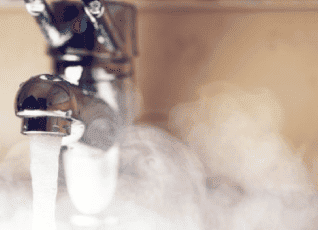
Hospital water distribution systems can experience contamination that is not accounted for by the water treatment system provided by the city, so extra precautions must be taken in the healthcare industry to prevent an outbreak of waterborne bacteria and pathogens. These dangerous bacterial microorganisms include Legionella, Mycobacteria, Pseudomonas, and Klebsiella. They pose a severe threat to the safety of medical facilities and can contribute to the unnecessary spread of disease in the form of hospital-acquired infections (HAIs). What does bacterial contamination mean for healthcare? According to the CDC, exposure to Legionella in a healthcare setting, such as hospitals and nursing homes, can be especially severe. Legionella can ubiquitously proliferate in water facilities, especially hot-water systems, contaminating all equipment that uses water. Legionnaires’ disease, obtained from inhaling aerosolized water infected with Legionella bacteria, is a prime example of a preventable hospital-acquired infection (HAI). Legionella in a healthcare setting would attack physically vulnerable individuals who already suffer from an underlying illness or a weakened immune system. Silver: the gold standard solution Healthcare and infection control professionals can preventatively address and reduce the risk of Legionella propagation in their facility by adopting a copper-silver ionization system. This system has been appraised as the gold standard and the most clinically effective prevention and remediation solution for Legionella and other waterborne pathogens. How does copper-silver ionization work? Scientists are now adding a silver coating to antibiotics because of its ability to maximize bacterial eradication. The subcellular structure of bacteria includes a wall that makes some bacteria impenetrable, aiding their survival against antibiotics. However, scientists have proven that adding a silver coating to antibiotics maximizes their eradication power, thus yielding a more potent antiseptic. This is due to silver nanoparticles’ antimicrobial properties, which are enhanced by an electric field. LiquiTech’s solution We disinfect water systems through copper-silver ionization, which penetrates through the wall of the bacteria, irreversibly damaging its key enzyme and inactivating all traces of the bacteria. This is achieved by applying an electric current across silver and copper-coated electrodes into the bacterial culture to produce nanoparticles that enhance antibiotic action at the anode. Systemically introducing these disinfectant ions in a facility water system, such as the plumbing infrastructure, inactivates Legionella and other harmful waterborne pathogens deeply embedded in the biofilm, thereby improving water quality. This method is non-corrosive and does not damage the distribution system. Comparatively, this method requires much less chemical use and maintenance than chlorine disinfection, which requires extensive dosage measurements. Copper-silver ionization also better protects the lids and pumps than ozone disinfection, which imposes a high voltage and requires comprehensive transportation and storage efforts. Moreover, unlike the other methods, the efficacy of copper-silver ionization is not dependent on water temperature, making it effective throughout an entire water system. Copper-silver ionization does not involve any disinfection byproducts. It has a longer-lasting local affectivity than most other disinfectants because it remains in the water for an extended period. Adopt a zero-tolerance policy for Legionella and other waterborne bacteria, and protect your patients, employees, and facility by preventing bacterial outbreaks in your facility water system. Be proactive about prevention by letting LiquiTech help you create a safe, secure, and clean environment accommodating your unique needs.
CDC Legionella Report Calls for Action
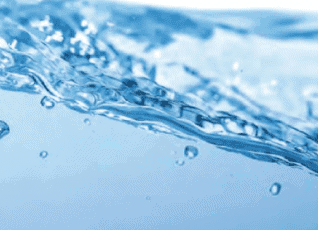
LiquiTech applauds CDC for its stand on water management plans and Legionella testing. Noting a 370% increase in Legionnaires’ disease outbreaks since 2000, the Centers for Disease Control and Prevention (CDC) has called on building owners and property managers to monitor better and control the risks associated with their drinking and service water systems. “As a company that has specialized in Legionella prevention and remediation for more than a quarter century, we have witnessed firsthand the increase in Legionnaires’ disease across the country, leading to needless suffering and loss of life,” said Tory Schira, LiquiTech’s CEO. “We commend the CDC for making such a clear statement that water management planning, environmental testing, and control measures are needed to stop the scourge of a deadly disease.” Analyzing 27 CDC investigations of Legionnaires’ disease outbreaks, the CDC found that potable (drinking) water distribution systems were the most frequent source of exposure, at 56% of cases, followed by cooling towers (22%), hot tubs (7%), industrial equipment (4%) and a decorative fountain (one outbreak). Potable water sources accounted for two-thirds of healthcare-associated outbreaks. Forty-four percent of the outbreaks investigated by the CDC were at hotels and resorts, 19% at long-term-care facilities, and 15% at hospitals (the others were among senior living facilities, workplaces, and the community). “We are happy to see an acknowledgment that cooling towers are far from the only way people contract Legionnaires’–a common misconception,” Tory said. “Cooling towers were certainly the source of some serious outbreaks, including in New York City last year, but as we at LiquiTech have found over the course of many years, drinking water is the bigger threat to human health and demands action to protect people and organizations.” The CDC specifically endorsed the new ASHRAE 188 building code standards, which establish minimum requirements for managing the risk for Legionella growth and transmission in building water systems. Gaps in maintenance that could be addressed with a water management program to prevent Legionnaires’ disease outbreaks were described in 85% of 27 investigated outbreaks. In most outbreaks, inadequate water disinfectant levels and temperatures in the optimal range for Legionella growth were observed; implementing a functional water management program could address these deficiencies through routine monitoring of disinfectant levels and water temperature, the CDC found. The CDC released a new toolkit for building owners and managers, “Developing a Water Management Program to Reduce Legionella Growth & Spread in Buildings: A Practical Guide to Implementing Industry Standards.” Based on ASHRAE 188, the toolkit provides a checklist to help identify if a water management program is needed, examples to help identify where Legionella could grow and spread in a building, and ways to reduce the risk of Legionella contamination.Specifically, the CDC, for the first time, endorsed environmental testing for Legionella to validate the effectiveness of control measures and noted that such testing should be provided in any healthcare facility, as older and sicker people are most susceptible to contracting Legionnaires’ disease. “We have waited a long time for the CDC to recognize the need for testing the water,” Tory said. “You cannot effectively carry out a successful water management program if you don’t know the nature of your problem. What gets measured can get addressed.” All of the elements in the toolkit and ASHRAE 188 standards are addressed by LiquiTech’s complete water management solutions, Tory noted. The company employs a comprehensive approach to secure water systems against various waterborne pathogens. “We are ready to help any building owner or facilities manager meet the challenges laid down by the CDC and ASHRAE,” he said.
Legionnaires in Long-Term Care Facilities
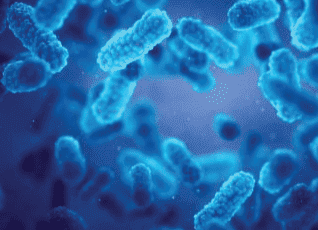
In the summer of 2013, the Wesley Ridge Retirement Community in Reynoldsburg, Ohio, experienced the largest and deadliest Legionnaires disease outbreak in state history. The assisted- and independent-living facility saw six people die and another 33 become seriously ill. The victims ranged in age from 63 to 99 and included residents, visitors, and one employee. For most people, Legionnaires’ disease is something from the history books, a vague memory of Philadelphia conventioneers falling ill in the 1970s. In fact, outbreaks of this often-fatal form of pneumonia, including in long-term care facilities, have been increasing for several years in the United States. In just the past three years, nursing home and senior living outbreaks have occurred in Baltimore; Pittsburgh; Cleveland; Clearwater, Florida; Jacksonville, Florida; and Florence, Alaska. The worst outbreak in a long-term care facility in North America occurred in 2005 at the Seven Oaks Home for the Aged in Toronto, Ontario, where 23 residents died and 112 others fell ill. A little background Legionnaires’ disease—clinically known as Legionellosis—is a form of pneumonia caused by waterborne bacteria of the genus Legionella. It carries a mortality rate of 40 percent when acquired in hospitals. More than 50 species and subspecies of Legionella exist, several of which can infect people. By far, the most common is Legionella pneumonia serogroup 1. The bacteria are ubiquitous and usually harmless in the environment, but they can quickly grow in warm, stagnant water. In certain circumstances, especially in institutions housing the elderly or in those with chronic illnesses, Legionella can multiply and cause pneumonia when people aspirate tiny particles while drinking water or showering. Since 2001, CDC surveillance reports have stated that Legionella is the single most reported pathogen associated with drinking water outbreaks in the United States. Voluntarily reported cases of Legionnaires’ disease tripled from 2000 to 2009 to 3,522 annually. This amount, however, is now known to be a vast underestimate, and some estimates of incidence exceed 10,000 cases per year. As many as 70 percent of all water systems in buildings over three stories are contaminated with Legionella. Because it takes specialized laboratory testing to diagnose it, the disease is severely underdiagnosed in long-term care facilities. Particular concerns for senior living The increase in cases of Legionnaires’ disease is of particular concern for owners and managers of long-term care facilities. Although anyone can become infected under certain circumstances, Legionnaires’ disease principally affects those susceptible due to age, illness, or compromised immune systems. Outbreaks usually are followed by lengthy, costly litigation. The aforementioned Toronto outbreak, for instance, resulted in a $600 million class action lawsuit. Under the right circumstances—detectable contamination of the water source, the correct species of Legionella, a susceptible individual, and sufficient intensity of exposure—victims of Legionnaires’ disease can quickly establish the basis for a valid claim, according to Russell Nassof, JD, founder of RiskNomics, a Scottsdale, Ariz.-based risk management assessment firm and an expert in Legionella litigation. Negligence can be alleged if a responsible party “knew or should have known” that a problem existed with the water and failed to maintain and clean up the system, resulting in punitive damages, Nassof says. The need to act will likely be a part of building codes. In mid-May, ASHRAE (formerly the American Society of Heating, Refrigerating and Air-Conditioning Engineers) announced the impending fourth public review of a draft of ASHRAE Standard 188P, Legionellosis: Risk Management for Building Water Systems. The organization says 188P would be the first set of standardized requirements specific to the building industry for managing the risks associated with amplified growth and exposure to Legionella. The latest draft, expected to be approved and made available this summer, will recommend that nursing home facility managers implement more robust safeguards through risk assessment and management practices. ASHRAE is not indicating when it will finalize the standard but finalized ASHRAE standards are the basis for many municipal building codes. Central to the process that the standard may require will be assembling a team to be responsible and accountable for building water system safety. This team will conduct a complete survey of potential problems in the water system, such as dead legs where water has sat for an extended period. If significant risk factors exist, the team will need to prepare a plan that identifies and establishes control measures at critical points, verifies that the control measures are implemented within specific performance limits, and validates that the program effectively prevents Legionnaires’ disease. Read the full article.
Cryptosporidium Explained and How To Keep It Out of Your Facility

What is Cryptosporidium? Cryptosporidium, also known as “Crypto,” is a bacteria found in water systems that are the cause of cryptosporidiosis as well as several other ailments. It is resistant to chlorine, so that it can survive for days, even in properly chlorinated pools. It is most commonly ingested by swallowing contaminated water while swimming, but practically any type of water or sewage system can become a breeding ground for this pathogen. Understanding Cryptosporidiosis Ingesting cryptosporidium in water can cause cryptosporidiosis, a potentially severe illness with more than 748,000 reported cases in the United States annually. This infection causes various gastrointestinal symptoms that are uncomfortable at best and require hospitalization at worst. The symptoms include diarrhea, stomach cramps, abdominal pain, vomiting, fever, weight loss, and dehydration. Protecting against Crypto in water Given how resistant cryptosporidium bacteria is to chlorine and other common sanitation techniques, it is crucial to have the proper water treatment measures in place. If you are concerned about cryptosporidium in water, your treatment plan should include a combination of safeguards. LiquiTech’s services can be integrated to create one of the best mitigation strategies available. The combination of our LiquiTech™ Sediment Filtration System and LiquiTech™ UV Disinfection System technologies provides a comprehensive approach to eliminating cryptosporidium in drinking water and other sources. Our Sediment Filtration System improves water quality by removing sediment, corrosion, and biofilm deposits at the source. The three-step cleaning method eliminates most nutrients and bacterial buildup required for biological growth inside pipes, filters, and vessels. The entire process is completed in seconds and requires no consumables. The system operates on water pressure, with no additional energy required. It is a high-efficiency, low-waste treatment strategy. Adding our advanced UV Disinfection System to your water treatment plan offers extra protection to any property. By exposing water to high-intensity UV light before it enters the plumbing, microorganisms are essentially deactivated. The wavelength of radiation emitted by our lamps damages the DNA and RNA of bacteria, viruses, molds, and yeasts, making them incapable of reproduction. With our proprietary lamp design, you can count on reliable and effective service and give staff and guests peace of mind while keeping them safe from cryptosporidium and many other dangerous waterborne pathogens.
Matagorda Regional Medical Center: a Clean Water Pioneer in Healthcare
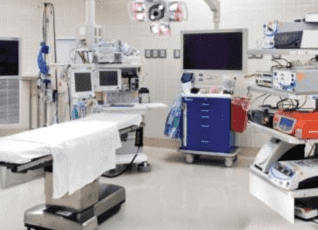
Public water systems traveling into large facilities are living biological ecosystems that harbor and distribute potentially harmful, naturally occurring bacteria such as Pseudomonas, Mycobacterium, and Legionella. Nationally, our drinking water infrastructure is in need of a $1 trillion overhaul, a daunting problem for stakeholders that lack the will to address it. Due to this, there’s a significant and under-appreciated need for decentralized water solutions. A study from Tufts University estimated that several classes of preventable waterborne pathogens contribute to $2 billion annually in Medicare payments and over 80,000 avoidable infections. Water is the source of as much as 30% of hospital-acquired infections. Matagorda Regional Medical Center is a pioneer in the healthcare sector in the small, quaint, rural town of Bay City, Texas. They partnered with us (LiquiTech) to provide their patients with quality water and maintain that water quality. Our comprehensive water safety programs can save the average 300-bed hospital $600,000 (5% hospital-acquired infection reduction conservatively) up to $3,600,000 (30% hospital-acquired infection reduction) in medical treatment costs annually. This does not include the additional benefits from liability reduction, CMS compliance, quality of care improvement benefits, productivity improvements, and brand equity protection. Matagorda has implemented LiquiTech’s self-cleaning filter, UV disinfection, and copper-silver ionization. We also support Matagorda with service operations, water testing, a CMS-compliant Water Management Plan, patented water monitoring technology, and analytics. By providing a safer care environment, Matagorda can tout that they have the safest, cleanest water in Texas.